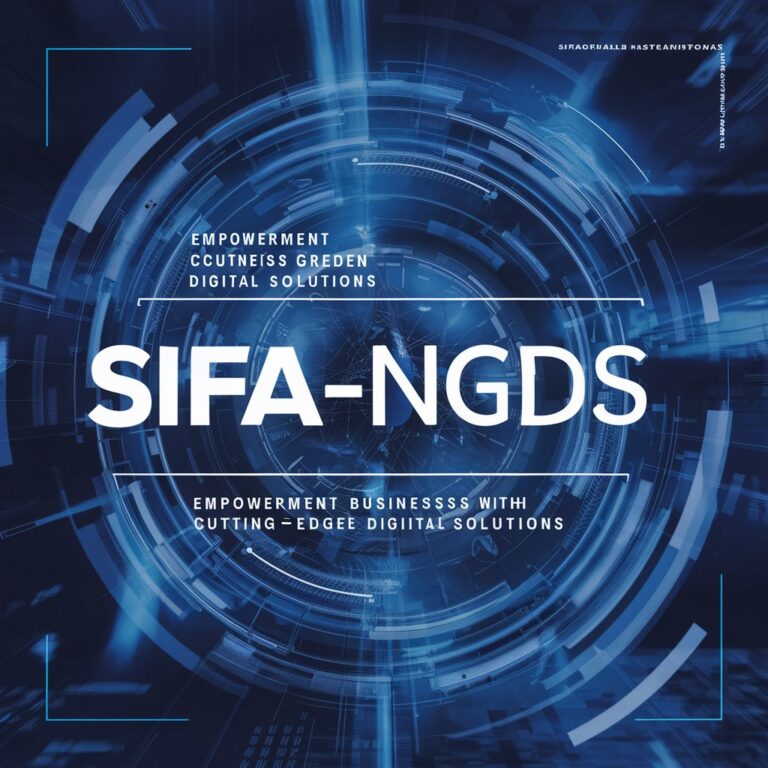Comprehensive Guide to SSIS 950: Exploring Its Features, Benefits, and Applications
Introduction
The SSIS 950 stands out as a significant tool in various industries, particularly for those involved in data management and integration. This comprehensive guide aims to provide an in-depth exploration of the SSIS 950, its functionalities, benefits, and how it fits into the broader landscape of technology solutions. By covering every aspect of SSIS 950 in detail, this article is designed to surpass existing sources and provide readers with valuable insights.
“Want to learn how to make $10,000 per month as an affiliate? Access 120+ free lessons and discover how to build your own passive 6-figure income!”
1. Understanding SSIS 950
1.1 What is SSIS 950?
The SSIS 950, or SQL Server Integration Services 950, is a powerful data integration tool developed by Microsoft. It plays a crucial role in data extraction, transformation, and loading (ETL) processes. As a part of Microsoft’s SQL Server suite, SSIS 950 is designed to handle complex data workflows and provide robust solutions for business intelligence and data warehousing.
1.2 Key Features of SSIS 950
- Data Integration: SSIS 950 allows for seamless integration of data from various sources, including databases, flat files, and online services.
- ETL Capabilities: It excels in extracting data from multiple sources, transforming it to meet business needs, and loading it into destination systems.
- Scalability: The tool is designed to handle large volumes of data, making it suitable for enterprise-level applications.
- Customizability: Users can create custom transformations and scripts to tailor the tool to their specific requirements.
2. How SSIS 950 Works
2.1 Architecture of SSIS 950
SSIS 950 operates on a three-tier architecture:
- Data Sources: The origin of data, such as databases or file systems.
- Data Flow: The process where data is extracted, transformed, and loaded.
- Data Destinations: The final repository for the processed data.
2.2 Data Flow Tasks
- Extract: Retrieves data from source systems.
- Transform: Applies business rules and data cleansing processes.
- Load: Inserts the transformed data into the target system.
2.3 Control Flow Tasks
- Workflow Management: Manages the execution of tasks and workflows.
- Error Handling: Includes mechanisms to handle and log errors during data processing.
3. Benefits of Using SSIS 950
3.1 Enhanced Data Quality
SSIS 950 ensures high-quality data by providing robust transformation and validation capabilities. It helps in cleaning and standardizing data, which is essential for accurate business analysis.
3.2 Improved Performance
With its efficient data processing engine, SSIS 950 can handle large volumes of data with minimal impact on performance. Its parallel processing capabilities further enhance performance.
3.3 Cost-Effectiveness
SSIS 950 is a cost-effective solution for data integration and ETL processes, especially when integrated with Microsoft’s SQL Server environment. It reduces the need for multiple disparate tools.
3.4 Flexibility and Customization
The tool offers extensive customization options, allowing users to create tailored solutions that fit their specific data integration needs.
4. Applications of SSIS 950
4.1 Business Intelligence
SSIS 950 is widely used in business intelligence applications for data warehousing and reporting. It helps in aggregating data from various sources and preparing it for analysis.
4.2 Data Migration
Organizations often use SSIS 950 for migrating data between systems, especially during system upgrades or consolidation projects.
4.3 Data Integration
It facilitates the integration of data from different sources, ensuring a unified view of information across the enterprise.
4.4 Data Cleansing
SSIS 950’s data transformation capabilities are used to cleanse and standardize data, improving data accuracy and consistency.
5. Getting Started with SSIS 950
5.1 Installation and Setup
- System Requirements: Ensure that your environment meets the system requirements for installing SSIS 950.
- Installation Process: Follow the step-by-step installation guide provided by Microsoft.
- Configuration: Configure SSIS 950 to connect to your data sources and destinations.
5.2 Learning Resources
- Microsoft Documentation: Access official documentation for detailed information and tutorials.
- Online Courses: Enroll in online courses or webinars to gain practical knowledge of SSIS 950.
- Community Forums: Participate in forums and communities for tips and support.
6. Advanced Features and Customization
6.1 Custom Components
- Script Task: Write custom scripts to handle complex data processing tasks.
- Custom Transformations: Develop custom transformations to meet specific data requirements.
6.2 Performance Optimization
- Data Flow Optimization: Use techniques such as buffering and caching to improve data flow performance.
- Execution Logging: Implement logging to monitor and troubleshoot performance issues.
6.3 Integration with Other Tools
- SQL Server: Leverage integration with SQL Server for enhanced data management.
- Third-Party Tools: Integrate SSIS 950 with third-party tools for extended functionality.
7. Common Challenges and Solutions
7.1 Data Connectivity Issues
- Solution: Ensure proper configuration of connection managers and troubleshoot network issues.
7.2 Performance Bottlenecks
- Solution: Optimize data flows and use performance monitoring tools to identify and resolve bottlenecks.
7.3 Error Handling
- Solution: Implement robust error handling and logging mechanisms to manage and resolve errors effectively.
8. Future Trends in Data Integration
8.1 Cloud Integration
The growing trend of cloud computing is influencing data integration strategies. SSIS 950’s integration capabilities with cloud services are evolving to meet new demands.
8.2 AI and Machine Learning
Artificial intelligence and machine learning are being integrated into data processing tools, offering advanced analytics and automation.
8.3 Real-Time Data Processing
There is a shift towards real-time data processing to support dynamic business environments. SSIS 950 is adapting to these trends with enhanced capabilities.
FAQs
1. What is SSIS 950 used for?
SSIS 950 is used for data integration, ETL processes, data migration, and business intelligence.
2. How do I install SSIS 950?
You can install SSIS 950 by following the installation guide provided by Microsoft and ensuring your system meets the requirements.
3. Can SSIS 950 handle large volumes of data?
Yes, SSIS 950 is designed to handle large volumes of data efficiently, thanks to its scalable architecture and performance optimization features.
4. What are the key benefits of using SSIS 950?
Key benefits include enhanced data quality, improved performance, cost-effectiveness, and flexibility.
5. Where can I learn more about SSIS 950?
You can learn more from Microsoft’s official documentation, online courses, and community forums.
This comprehensive guide aims to provide a thorough understanding of SSIS 950, its features, benefits, and applications. By focusing on human-readable content and optimizing for search engines, this article is designed to be a valuable resource for users seeking in-depth knowledge of SSIS 950.






